

| Home | Log In | Register | Our Services | My Account | Contact | Help |
You are NOT currently logged in
dai oldenrich - 01 Sep 2006 13:32
click your browser refresh button to update charts
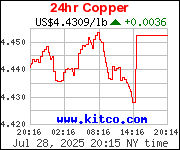
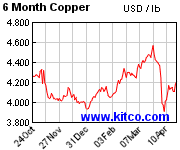
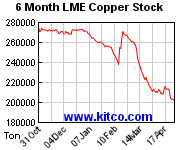
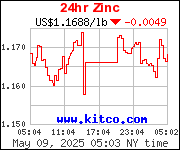
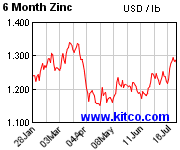
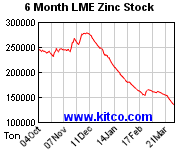
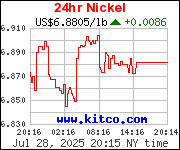
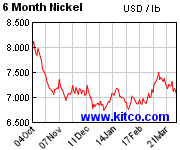
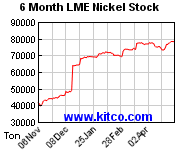
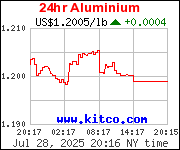
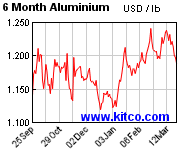
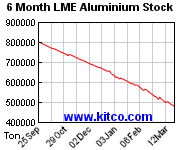
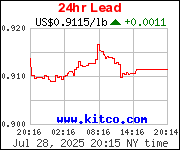
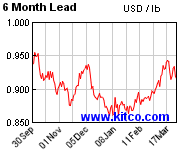
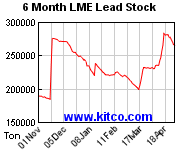
Also see: gold charts here silver charts here platinum charts here
dai oldenrich - 06 Oct 2006 07:33 - 88 of 181
Oct. 6 (Bloomberg)
Copper Declines in Asia After Trader Charts Give Sell Signals - By Feiwen Rong
Copper in Asia declined after charts some traders use to predict price movements gave sell signals.
A price movement ``above $7,400 is needed to reverse the downtrend since Sept. 27,'' analysts at Barclays Capital in London said in an e-mailed report yesterday. Without such a movement, ``the market is precariously on edge.''
Copper futures on the London Metal Exchange fell as much as $29, or 0.4 percent, to $7,270 a metric ton, and traded at $7,275 at 11:37 a.m. Singapore time.
dai oldenrich - 06 Oct 2006 07:42 - 89 of 181
Daily Telegraph - 06/10/2006
Banks may be behind plunge in gold price - By Ambrose Evans-Pritchard
Central banks may have dumped far more gold on the markets over the last three weeks than officially reported, accounting for the sudden plunge in prices that has stunned investors.
advertisement
Barclays Capital said Europe's banks had sold an extra 100 tonnes from reserves in a rush to meet a quota deadline on Sept 26, but had done so by selling through forward contracts that disguised the effect.
"We have been able to infer this from trading patterns. It has had a major impact on the markets," said Costanza Jacazio, the bank's gold expert. Barclays is one of the world's three top bullion traders.
"We suspect that the Banque de France has been involved," she said.
The huge sales would help explain gold's brutal fall from $640 an ounce in early September to $559 this week, an effect compounded in recent days by hedge fund liquidation. It was up slightly yesterday at $569.75 in New York trading.
Gold typically rallies in September in the build-up to the Indian marriage season. While gold has undoubtedly been hit by the broader fears of a commodity slump, base metals have held up much better. The central banks have reported sales of just 393 tonnes of gold for the year, far below the 500 annual limit agreed under the Washington Accord, and agreement by 15 central banks in Europe.
Barclays said the group had in reality met the 500 tonne limit, with others snapping up the unused quota of the Bundesbank - which has balked at selling in order to assert its independence against Berlin's politicians.
"We believe this is actually very bullish for gold because it shows that the sell-off was not driven by investors," said Ms Jacazio.
Philip Klapwijk, chairman of the precious metals group GFMS, said bullion would soon resume its five-year bull market. "The game is not over for gold. We've still got a big dollar devaluation ahead," he said.
dai oldenrich - 07 Oct 2006 08:29 - 90 of 181
Reuters - Fri Oct 6, 2006 11:59 PM - By Vivianne Rodrigues
A rally in U.S. stocks that pushed the Dow industrials to a record may stall next week as signs of an economic slowdown curb the appetite for equities just as the third quarter's earnings season gets under way.
This week, the blue-chip Dow Jones industrial average hit a record closing high and an all-time intraday high for three days in a row in a rally driven by a sharp drop in oil prices and expectations that the Federal Reserve will not raise interest rates in the near future.
The rally also propelled the Standard & Poor's 500 Index to fresh 5-1/2-year highs more than once.
But on Friday, weaker-than-expected September employment data, following a White House forecast for slower GDP growth late on Thursday, brought the rally to a halt and may drag stocks lower in the week ahead, analysts said.
"We had a long run in equities and we're probably due for a sell no matter what the news is," said Elliot Spar, market strategist at Ryan Beck & Co., in Shrewsbury, New Jersey. "If the economy is going to go down, then you have to worry about earnings momentum."
Investors will scrutinize corporate profits next week, Spar said, as the earnings season heats up, with Alcoa Inc., Costco Wholesale Corp. PepsiCo Inc. and General Electric Co., slated to report.
Trading may be lighter than usual on Monday as the U.S. bond market will be closed in observance of the Columbus Day holiday. The U.S. stock market will remain open.
BEWARE OF THE JINX MONTH
For the week, stocks rose -- with the Dow up 1.5 percent, the S&P 500 up 1 percent and the Nasdaq up 1.8 percent.
The Dow average closed at record highs three times in the week, with an intraday high on Thursday at 11,870.06, its highest level since Jan. 14, 2000. On Thursday, the S&P 500 closed at 1,353.22 and peaked intraday at 1,353.79 -- with those levels marking the highest since Feb. 5, 2001.
For the year to date, the Dow is up 10.6 percent, the S&P 500 is up 8.1 percent and the Nasdaq is up 4.3 percent.
After stocks broke new ground last week, some investors may be more cautious during the rest of October, known as "the jinx month," according to the Stock Trader's Almanac, because of stock market crashes in 1929 and 1987.
Volatility may increase early this week, traders said, with the possibility of a nuclear weapon test by North Korea over the weekend.
"If they do go ahead with the test, the stock market may get a bit more skittish," said Tim Smalls, head of U.S. stock trading at brokerage firm Execution LLC in Greenwich, Connecticut. "It's just one thing we don't need right now."
The White House said on Friday that it had no new information to disclose about whether a nuclear test was being planned, but said North Korea should not carry out the test.
On Friday, U.S. crude oil for November delivery settled at $59.76 per barrel -- down 5 percent for the week. NYMEX crude is down 24 percent from its record set in July.
EARNINGS ON FRONT BURNER
On Tuesday, the third-quarter earnings season kicks off for blue chips with Alcoa reporting results, followed by General Electric on Friday.
"Earnings have been on the back burner, and they move to the front very soon," said Michael Panzner, vice president of sales trading at Collins Stewart in New York. "I have a funny feeling things haven't been particularly great."
S&P 500 companies are expected to achieve third-quarter earnings growth of 14.1 percent from a year earlier, according to Reuters Estimates. Meanwhile, pre-announcement activity for U.S. companies stayed negative for the week ended Sept. 29.
FOMC MINUTES, RETAIL SALES AHEAD
Next week's economic data could help investors assess the likely magnitude of consumer spending before the start of the holiday season as well as the Fed's view of the economy.
On Tuesday, the government releases its report on wholesale inventories for August. Economists polled by Reuters expect inventories to rise 0.7 percent, down from a 0.8 percent gain in the previous month.
Minutes of the Federal Open Market Committee's Sept. 20 meeting will be released on Wednesday and the Fed's Beige Book -- a survey of economic conditions in the Fed's 12 districts -- will follow on Thursday.
The international trade deficit for August, also due on Thursday, is forecast at $66.70 billion, down from $68 billion in July, according to the Reuters poll.
A slew of data is due on Friday, including import prices, retail sales and the University of Michigan's reading on consumer confidence.
Import prices likely shrank 1.2 percent in September, after a 0.8 percent gain in the previous month, according to the estimates of economists surveyed by Reuters.
Retail sales for September are forecast to rise 0.2 percent, matching a 0.2 percent gain in August, according to economists polled by Reuters. Excluding auto sales, September's retail sales are seen unchanged, compared with a 0.2 percent gain the previous month.
The preliminary October reading of the University of Michigan's consumer sentiment index probably will show a rise to 86.5 from 85.4 in September, according to the Reuters poll.
dai oldenrich - 07 Oct 2006 08:38 - 91 of 181
Bloomberg - 6 October 2006
Zambia plans to raise copper-mining tax to 2,5%
Zambia's former Finance Minister Ngandu Magande said the country plans to increase the sales tax paid by copper and cobalt mining companies to 2,5 percent, Reuters reported, citing an interview with Magande.
The company currently charges them 0,6 percent, the newswire said on Thursday. Magande is expected to retain his post as finance minister after President Levy Mwanawasa, re-elected on Oct. 2, names his new cabinet, it added.
The country will also force the companies to increase the pay of qualified Zambians to match the salaries of expatriate workers, Reuters said.
Zambia plans to increase economic growth to between 7 percent and 8 percent, from current levels of 5 percent, the newswire said.
dai oldenrich - 07 Oct 2006 08:40 - 92 of 181
Bloomberg - 6 October 2006
Copper may fall next week as U.S. housing slowdown curbs use
Copper may drop next week on speculation a slowdown in U.S. housing demand will curb consumption in the world's second-largest user of the metal.
U.S. Federal Reserve Chairman Ben S. Bernanke said Oct. 4 the housing market is in a "substantial correction" that will lop about a percentage point off economic growth in the second half and restrain expansion next year. An average family house contains 400 pounds of copper, found in wires and pipes.
The metal has slumped 17 percent since May 11 when it traded at a record $8,800 a metric ton in London.
"Collapsing U.S. housing demand will lead to a further fall," said Thomas Au, principal at R.W. Wentworth & Co., a New York-based consulting company.
Six of 12 analysts, investors and traders surveyed by Bloomberg yesterday forecast copper will decline next week. Four expected a gain and two predicted little change.
Copper for delivery in three months on the LME lost $29, or 0.4 percent, to $7,270 a metric ton as of 7:37 a.m. local time. It has dropped 3.6 percent this week. On the Comex division of the New York Mercantile Exchange, copper for December delivery rose 0.3 percent to $3.331 a pound in electronic trading.
The metal didn't trade on the Shanghai Futures Exchange due to a week-long national holiday in China, the largest copper- consuming nation.
Demand usually tracks industrial activity. The Institute for Supply Management's manufacturing index fell to 52.9. The gauge was expected to fall to 53.5 from 54.5 in the prior month, based on the median of 64 forecasts in a Bloomberg News survey completed before the data was released Oct. 2. Private residential construction spending dropped 1.5 percent, the Commerce Department said Oct. 2.
Interest-rate gains
"The concern on the U.S. economy is far from over," said Roy Carson, a London-based analyst at Triland Metals Ltd., one of 11 companies trading on the floor of the LME.
Copper has fallen from its record as central banks in the U.S., Europe and Japan raised interest rates, triggering speculation that global economic growth will slow next year.
"These fears are overdone," Morgan Stanley, the world's biggest securities firm by market value, said in a report yesterday. An increase in business spending in Asia and Europe will cushion the effects of a U.S. housing slowdown, it said.
Morgan Stanley raised its 2007 forecast for average copper prices by 17 percent to $3.50 a pound, or $7,716 a ton. It also increased this year's forecast to $3.15 a pound, from $2.98. Copper demand will exceed production by 110.000 tons in 2006, the bank said.
Shrinking inventory may indicate expanding demand. Copper stockpiles tracked by the LME dropped 2.7 percent this week to 114,425 tons as of yesterday. That's less than three days of global consumption.
dai oldenrich - 08 Oct 2006 08:08 - 93 of 181
www.thepost.ie - 08 October 2006
Rise of commodities unlikely to be sustained - By Eugene Kiernan
Commodities have garnered a lot of the financial market limelight in 2006. In the past 18 months, the prices of basic commodities such as aluminium, copper, lead and zinc have doubled in value.
Commodity prices have indeed run very hard. Since the end of 2001, base metal prices have soared about 270 per cent and oil prices have also risen. From $19 for a barrel of oil in 2001 to around $60 currently, we have seen a tripling in energy costs.
This move in commodities has generated a lot of interest and led many portfolio investors to consider commodities as an asset class to be included in pension funds. Base metals, as measured by the Bloomberg Base Metals Index, peaked in early May, slumped by over 20 per cent to mid-June, and then staged a slow recovery. They are currently 10 per cent below these recent highs today. As a pattern, it was not dissimilar to what we saw in many global equity markets.
Oil prices displayed a different pattern, rising to just under $79 for Brent crude in early August only to slide by 25 per cent in the weeks since. This decline has been partly responsible for the better feel to equity markets since mid summer. Do these short-term trends have any implication for investors? The commodity which attracts the most attention is oil. Energy prices have been dancing to a different beat in this most recent period. The most recent leg has been clearly downward. How have economies and markets responded to these gyrations?
Its not that economies have become immune to energy price increases, but they have learned to cope better.
Oil companies are an important part of many of the global stock markets today. In Britain, oil companies will account for about 20 per cent of all profits earned in the market. In the US, majors such as Exxon and Chevron account for 6 per cent or so of the S&P index.
Higher oil prices mean stronger cash flows for these companies, but volatile oil prices can hamper planning and indeed final customer demand. Senior management from the global players in this industry have always spoken about long-term pricing for oil being substantially below the level we approached in mid-2006. The key point from an investors point of view is that at oil price levels even lower than today, free cash flow in these companies will still be sufficient to fund developing the business and allow cash to be returned to share holders in healthy dividends or buy-backs.
This robust aspect of energy stock performance is clearly displayed when we look at how their share prices have done even as oil prices have plummeted. The energy sector has lagged other sectors of the market, but the fallout is not as severe as the fall in the energy price itself.
These are volatile times for commodity prices, but what recent moves may have shown investors is that the hyper growth rate that we have seen in commodity prices should not be extrapolated into the future. Oil shares and the oil price are not the same thing.
maddoctor - 08 Oct 2006 14:48 - 94 of 181
your plowing a lonely furrow here but i,m reading it!
bristlelad - 08 Oct 2006 19:53 - 95 of 181
DITTO//
dai oldenrich - 09 Oct 2006 07:39 - 96 of 181
Thanks guys. Keep reading - it's good for your wealth !! (I hope)
dai oldenrich - 09 Oct 2006 07:40 - 97 of 181
Bloomberg - Oct. 9
Still Like Copper, Nickel, Zinc? Buy an LME Membership Instead - By Chanyaporn Chanjaroen and Matthew Leising
The London Metal Exchange, the biggest marketplace for trading aluminum, copper, nickel and zinc, is a better investment than any of those commodities.
The price of membership has increased 72 percent to $2.03 million since May on speculation the 129-year-old exchange will sell shares to the public or be acquired. Copper and zinc fell 15 percent in the past five months and aluminum 21 percent.
Profits quadrupled this year at the LME, whose members collect a fee of 0.016 percent of the value of every contract that changes hands. The boom and bust in commodities expanded trading 21 percent to 59.1 million futures and options, or about $2 billion a day, increasing members' revenue while eliminating the risk of price fluctuations.
``You make money when the market goes up, down or sideways,'' said William Adams, chief energy and capital market strategist at LaSalle Futures Group Inc. in Chicago. Investors ``can almost look at an exchange as a trade factory,'' profiting as the number of trades rises, he said.
Shares of the Chicago Board of Trade, where daily trading in Treasuries, grains and gold reached a record in the third quarter, have more than doubled since the exchange went public a year ago. IntercontinentalExchange Inc. has risen 97 percent in nine months, and Chicago Mercantile Exchange Holdings Inc. stock has returned an average 90 percent a year since 2002.
Chicago Board of Trade Chief Executive Officer Bernard Dan will talk with LME chief Martin Abbott about a link-up at a meeting this week, the Observer reported yesterday, without saying where it obtained the information. Dan would either like to buy the LME or set up an alliance, the paper said.
2,000 Traders
Surging values of commodity exchanges follows a five-year rally in raw materials that led to all-time high prices for oil, gasoline, copper, zinc and sugar, and sent gold to a 26-year record. Demand for commodities jumped as global economic growth fueled purchases of homes, cars and appliances, particularly in China and the U.S., and producers of raw materials were unable to keep pace.
A public sale of the London Metal Exchange is likely to be discussed when 2,000 metals traders, producers and consumers gather in London for their annual convention this week. Some of the 81 member-firms may push the exchange to go public to allow them to raise cash from their investment.
``An IPO should be very carefully considered,'' said David King, who ran the LME from 1989 to 2001 and is now managing director for business development at HSBC Bank Middle East Ltd. in Dubai. ``More and more exchanges around the world are selling shares to the public to raise funds or otherwise satisfy the needs of their stakeholders.''
`Stagnating'
The exchange, which still relies on brokers shouting orders across a six-meter-wide trading floor rather than on electronic transactions, may need to sell shares to finance its inevitable switch to computers, some commodities experts said. The LME otherwise risks losing market share like the New York Mercantile Exchange has for its benchmark gold contracts.
Nymex, whose members resisted computer-based trading in favor of face-to-face transactions, lost almost half of its gold futures business to the CBOT's online gold contract. The LME needs to modernize, said Colin Griffith, chairman of the 10- month-old Dubai Gold and Commodities Exchange.
``If you look around the world, Comex and Nymex are now doing a lot more business on electronic platforms,'' Griffith said. ``The Chicago Board of Trade has come in and taken a big chunk of gold trade via its efficient electronic-trading platform. Those who are not doing that are stagnating.''
Selling the LME to investors isn't a sure thing. King's successor at the exchange, Simon Heale, said in an interview that the possibility of a public offering, or even a takeover, ``is a non-story.'' LME shares belong to those who want to trade on the LME, he said.
Beats Big Board
Heale, 53, left his position last week to make way for former publisher Martin Abbott. LME spokesman Adam Robinson said Abbott wouldn't be available to comment before the annual convention that starts today.
Growth in trading at the London exchange outpaced the 14 percent increase on the Chicago Board of Trade, the second- largest U.S. futures market, through August. The LME's two newest members are Charlotte, North Carolina-based Bank of America Corp., the U.S. second-largest bank, and the Royal Bank of Canada, or RBC, the biggest Canadian lender.
``There is demand from our customers'' for LME products, said Alex Heath, head of RBC's base metals trading desk in London, who has spent 30 years in the metals industry.
Membership Prices Jump
The surge in commodities exchanges stands in contrast with the New York Stock Exchange and other equity marketplaces that recently went public. Shares of the parent of the NYSE have declined by 1.8 percent from March 8 through September as more trading moved to rival markets. The Big Board's share of trading in its own listed stocks fell last month to a record low of 69.9 percent.
LME's so-called Class B shares, which grant the holder the right to trade on the exchange, last sold for 43 pounds ($81) each, according to its Web site. In June, the shares sold for 25 pounds each. Since Class B shares were introduced in May, 51,200 have changed hands. To be an LME member, which gives the right to issue metal contracts and clear trades, a company must hold 25,000 shares. Class A shares, which give the holder a stake in the exchange itself, haven't traded since March.
The increase in the LME share price ``reflects people's recognition of the strong cash-flow-generating characteristics of exchanges and buoyant volumes,'' said Andrew Mitchell, an analyst at Fox-Pitt, Kelton in London. ``The potential change to a profit-making model has prompted talk of an eventual initial public offering.''
Windfall Investment
Net income at the LME was 1.4 million pounds ($2.6 million) last year, up fourfold from 2004. Nymex Holdings Inc., owner of the world's largest energy marketplace, said second-quarter profit more than doubled to $38.1 million.
Daniel Dicker, who bought a Nymex seat two decades ago so he could trade commodities, says the investment has been a windfall.
``That's the irony, no one bought these because they were investments,'' said Dicker, who owns two Nymex seats and has seen one of them rise 40-fold in value and the other 20-fold. ``I feel like I put a quarter chip down on a roulette table on black and went out to dinner, and in the two hours the wheel hit nothing but black.''
Commodities exchanges now are attracting takeover offers. The New York Mercantile Exchange agreed to sell a 10 percent stake to Greenwich, Connecticut-based buyout firm General Atlantic LLC for $170 million. General Atlantic won a bidding war among investment firms such as Blackstone Group LP and Battery Ventures, as well as a group led by former Nymex chairman Michel Marks.
Past Attempts
The LME, whose members Barclays Plc and Man Group Plc, have fended off attempts to steal business. The Nymex introduced an aluminum contract in 1999, with Alcoa Inc., the world's largest producer of the metal, the first company to trade it. Today, fewer than 100 contracts change hands each day on the Nymex, compared with as many as 11,000 three-month aluminum futures contracts on the LME.
Nymex has begun shifting more of its trades online. It began offering simultaneous electronic and floor-based trading of most metals contracts on Sept. 4. Two weeks ago, about 52 percent of its energy contracts were bought and sold by computer, according to John Davidson, a managing director at the Chicago Mercantile Exchange.
CBOT on Aug. 1 began offering daytime electronic trading in grain futures for the first time in its 158 years. Nymex, in a bid to take back its market share from CBOT, offered shares and $10 million in cash to its members so it can extend electronic trading of precious metals to daytime.
Days Are `Numbered'
Investors can start buying and selling reduced-size metals contracts on the LME from Nov. 20. The contracts, called LMEminis, willallow users to trade in lots of 5 tons, compared with existing 25-ton contracts. LMEminis will only be traded electronically.
The days of floor-trading on the LME ``are severely numbered,'' Malcolm Freeman, managing director of Ambrian Commodities Ltd. in London, an LME member who has been at the exchange since joining as a 17-year-old clerk in 1974. The trading floor will probably be closed within a year, he said.
Not so, says the LME's outgoing chief Heale.
Trade in the ring ``is robust,'' Heale said. Members will have the final say on whether to keep the floor open.
``There's a transparency on the floor that trade via electronic platforms and telephone can't match,'' said Fred Demler, head of global metals trading at Man Financial Inc. in New York. Man is the LME's largest brokerage for funds.
``The LME floor has been in operation for nearly 150 years and will continue as long as customers and member firms want to,'' said Peter Sellars, president of Sempra Metals Ltd. which trades on the floor and operates an electronic trading platform.
dai oldenrich - 09 Oct 2006 07:43 - 98 of 181
Bloomberg - Oct. 9
Gold Extends Gains in Asia After North Korea's Nuclear Test - By Feiwen Rong
Gold extended gains in Asia after the North Korea said it carried out its first nuclear weapons test, boosting the precious metal's appeal as a safe investment amid geopolitical tensions.
Gold for immediate delivery rose in early trade after crude oil rebounded in New York. The bullion extended gains after the announcement by North Korea's official Korea Central News agency.
``Events such as this will boost gold's appeal,'' Ma Tianyu, a bullion trader at Bank of China, said by phone from Shanghai today. ``So far, people have not flocked to gold market yet and we are all waiting to see the event as it unfolds.''
Gold for immediate delivery rose as much as $5.1, or 0.9 percent, to $579.20 an ounce at 11:29 a.m. Singapore time.
Gold futures for December delivery rose $7.10, or 1.2 percent, to $583.90 an ounce on the Comex division of the New York Mercantile Exchange at 11:29 a.m. Singapore time.
dai oldenrich - 09 Oct 2006 07:48 - 99 of 181
Oct. 9 (Bloomberg)
Shanghai Copper Rises on Speculation Chinese Demand to Increase - By Xiao Yu
Copper in Shanghai rose after a week- long Chinese holiday on speculation demand is increasing fast enough to erode inventory in the world's biggest copper consumer.
Rising demand from processors such as electric wires and cable producers may prompt users to import more, said Li Ling, a trader at Shenzhen Star Futures Co., by phone from Shanghai today. Inventories at factories are close to zero, a signal imports may rebound, said Yang Changhua, senior analyst at Beijing Antaike Information Development Co. on Sept. 27 at a conference in eastern Nanjing city.
``October and November are the peak consumption period of the year,'' said Star Futures' Li. Processors tend to undertake maintenance in summer as households use more air-conditioning, draining power supplies for the plants.
Copper for November delivery rose as much as 1,510 yuan, or 2.2 percent, to 71,900 yuan ($9,093) a metric ton on the Shanghai Futures Exchange. The metal traded at 70,840 yuan a ton at 11:20 a.m. local time.
China's imports of copper, which rose to a record price of $8,800 a ton in May on the London Metal Exchange, fell 24 percent from January to August from a year ago, the customs office said Sept. 12. Imports have been dropping year-on-year since October 2005.
Metal for three month delivery on the LME rose as much as $65, or 0.9 percent, to $7,525 a ton. Metal traded at $7,510 at 11:12 a.m. Shanghai time.
22-Week Low
Copper stockpiles in Shanghai fell to a 22-week low as of Sept. 28 as traders brought the metal out of the exchange warehouses to meet demand in the physical market, Jiang Mingjun, a trader at Shanghai Oriental Futures Co. said Sept. 29. Stockpiles fell 9,470 tons, or 22 percent, to 33,549 tons, from the previous week.
Inventories in the LME warehouses have fallen 3,525 tons this month to 114,050 tons, Bloomberg data showed.
Metal for immediate delivery in Changjiang, Shanghai's biggest copper market, rose as much as 1.5 percent today to 71,940 yuan a ton. Chinese users have to pay 17 percent value- added tax, 2 percent import tax, premiums and freight charges for imported copper.
dai oldenrich - 10 Oct 2006 07:41 - 100 of 181
Oct. 10 (Bloomberg)
Shanghai Copper Falls as China's Growth Curbs May Hurt Demand - By Helen Yuan
Shanghai Copper futures had their biggest decline in three weeks amid speculations that government measures to curb excessive investment will hurt consumption of the metal used in piping and wiring.
Copper for November delivery fell as much as 880 yuan, or 1.3 percent, the biggest decline since Sept. 20, to 69,750 yuan ($8,826) a metric ton on the Shanghai Futures Exchange. The contract traded at 69,850 yuan at 11:30 a.m. break local time.
China, the world's biggest copper consumer, will step up efforts to avoid accelerated economic growth that may lead to overheating, Ma Kai, the nation's top economic planner, said in a statement posted on the National Development and Reform Commission's Web site yesterday. China will curb excessive growth in investment and loans and tackle the widening trade deficit in the second half, he said.
``Tighter controls on properties and other fixed-asset investments may harm metal demand,'' said Wang Zheng, a Shanghai-based metal trader with Dalu Futures Co.
Metal for three-month delivery on the London Metal Exchange fell 0.1 percent to $7,440 a ton at 12:02 p.m. Shanghai time.
Metal for immediate delivery in Changjiang, Shanghai's biggest copper market, fell as much as 1.2 percent today to 71,090 yuan a ton. Chinese users have to pay 17 percent value- added tax, premiums and freight charges for imported copper.
China's economy grew 11.3 percent in the second quarter, the fastest pace in more than a decade. The World Bank said in August failure to control investment could leave the world's fourth-largest economy with idle plants, falling profits and rising bad loans.
Lower Prices
The State Council, China's Cabinet, will soon issue new suggestions on land use and management including adjusting fees and taxes for construction purposes, Ma said.
Calyon, the investment-banking unit of Credit Agricole SA, France's second-largest bank, said copper and aluminum prices will probably average lower in 2007 compared with this year because of a ``deceleration'' in global economic growth.
Copper prices will average $6,100 a metric ton next year, down from $6,675 a ton estimated this year, Calyon analyst Michael Widmer said in a report yesterday.
Users will be forced to switch to cheaper materials after copper prices soared to records earlier this year, Peter Kettle, research director at industry consultant CRU International in London.
dai oldenrich - 11 Oct 2006 07:05 - 101 of 181
AFX
Copper prices could turn lower by end-2007 as supply rises - analyst
Copper prices, which have seen dramatic increases this year, will remain strong in the first half of next year but could turn lower after that as new supplies come on stream, said Peter Kettle, research director at mining consultancy group, CRU.
Speaking at an LME seminar, Kettle said supply is set to "catch up with demand eventually" owing to increased investment in new mining projects. "Our forecast is for balance" between supply and demand in 2007, he said. "There remain concerns about strikes and certainly there is still the possibility of another price spike early next year, but after that we see fairly large surpluses. We see a fairly sharp fall in prices," said Kettle.
He also noted that while the 'super-spike' in copper prices may have caused permanent damage to consumption patterns. "Over the next couple of years, the price effects could bend the trend downwards. Copper (consumption) might be affected by substitution. Our calculation is that losses as a result of substitution are spreading," he said.
World demand for copper suffered a bet loss of 1 pct in 2005 as users chose to use other metals, according to CRU research. "These losses are very likely permanent," said Kettle.
dai oldenrich - 11 Oct 2006 07:05 - 102 of 181
International Herald Tribune - 10 October 2006
China sets new limits on lead, zinc
China sets new limits on lead and zinc. China said Tuesday that it hoped to cap the production capacity of refined lead and zinc by 2010 to cool investment and ease raw material shortages.
The government wants to limit annual capacity of refined lead to four million metric tons and that of zinc to five million tons by closing polluting plants and restricting new projects, the State Administration of Taxation said in a statement.
dai oldenrich - 11 Oct 2006 07:05 - 103 of 181
Oct. 11 (Bloomberg)
Gold Falls After U.S. Dismisses Reported Second N. Korea Test - By Tan Hwee Ann
Gold fell in Asia, wiping out earlier gains after the U.S. dismissed a report that North Korea had conducted a second nuclear test.
The White House said no new seismic activity had been detected in North Korea. Japan's Nippon Television Network Corp. said earlier the country had detonated a second atomic bomb after North Korea reported a first test on Oct. 9. Some investors buy gold as a haven at times of political uncertainty.
``The U.S. has knocked it down, and that said, the market is back to where it was,'' Darren Heathcote, head of trading at Investec Australia, said by phone in Sydney. ``At the moment, the driver for gold is oil, which fell last night. One could expect gold to remain in the doldrums.''
Gold for immediate delivery fell as much as $1.10, or 0.2 percent, to $571.90 an ounce and was trading at $572.20 at 12.29 p.m. Sydney time. It jumped as much as $2.80, or 0.5 percent, to $575.80 following the Nippon Television report.
Gold, which some investors buy as a hedge against inflation, has dropped 22 percent from a 26-year high of $730.40 an ounce on May 12. That's in line with the 25 percent fall in New York crude oil futures from its record $78.40 a barrel on July 14.
Oil prices are trading near an eight-month low today after Saudi Arabia told customers in Europe and Asia that it will maintain shipments amid a seasonal drop in demand.
Gold for delivery in December rose as much as $3.60, or 0.6 percent, to $579.80. It was unchanged at $576.20 an ounce at 12:30 p.m. Sydney time in after-hours electronic trade on the Comex division of the New York Mercantile Exchange.
A futures contract is an obligation to buy or sell a commodity at a set price for delivery by a specific date.
dai oldenrich - 11 Oct 2006 07:06 - 104 of 181
Oct. 11 (Bloomberg)
Copper Declines in Shanghai After Codelco Signs Labor Agreement - By Xiao Yu
Copper futures in Shanghai fell for a second straight day as concern over supply disruptions eased after Codelco, the world's biggest producer of the metal, avoided a strike at its Andina unit in central Chile.
The workers at Andina, which accounts for 14 percent of Codelco's copper output, accepted the offer of a rise of 3 percentage points above inflation and a 6.4 million peso ($11,968) bonus, Codelco said yesterday in a note to the securities regulator. Government-owned Codelco will also hold wage talks this year at Chuquicamata, its largest mine, it said.
``Further supply disruptions are unlikely this year as major copper producers have increased salaries for workers,'' said Xue Feng, Shanghai-based trader at Maike Futures Co. ``Investors' concern over potential supply disruptions are easing as big producers have reached agreement with workers.''
Copper for November delivery fell as much as 340 yuan, or 0.5 percent, to 69,660 yuan ($8,799) a metric ton on the Shanghai Futures Exchange. The contract traded at 69,880 yuan at 11:30 a.m. mid-day break.
The agreement with Andina's 1,018 unionized workers follows BHP Billiton Ltd.'s decision to increase bonuses paid to workers on its Spence project in Chile last month. BHP, the world's largest mining company, also agreed to increase wages as part of a package that averted a strike on Sept. 27. Spence, which will begin operating in December, will produce 200,000 tons of copper annually at full capacity.
Metal for three month delivery on the London Metal Exchange fell $5, or 0.1 percent, to trade at $7,425 a ton at 11:02 a.m. Shanghai time.
Market Confidence
Copper for immediate delivery in Changjiang, Shanghai's biggest copper market, fell as much as 340 yuan today to 70,750 yuan a ton. Chinese users have to pay 17 percent value-added tax, premiums and freight charges for imported copper.
Copper fell partly because investors are concerned that the U.S. economy may slow down. Recent falls in gold and oil prices also affected market confidence, said Maike's Xue. A stronger dollar would make gold less attractive as investment as it is costlier for buyers holding other currencies, he said.
Gold, which is seen as a hedge against inflation, has dropped 22 percent from a 26-year high of $730.40 an ounce on May 12. That's in line with the 25 percent decline in New York crude oil futures from its record $78.40 a barrel on July 14.
Still, some traders and producers believe copper will stay high till the end of this year as demand is recovering and the U.S. economy is unlikely to go into recession, Maike's Xue said.
`Robust Demand'
Chile, the world's biggest copper producer, expects metal prices to average $3 a pound this year, amid ``robust'' demand, Karen Poniachik said in an interview in London yesterday. Copper will trade between $3.40 and $3.50 a pound through December, Poniachik said.
Copper futures for December delivery rose 0.1 percent to $3.380 a pound on the Comex division of the New York Mercantile Exchange in after-hour trade.
dai oldenrich - 11 Oct 2006 07:43 - 105 of 181
Oct 10 - (Reuters)
New York - After the Bell: Alcoa falls further
Shares of Alcoa Inc. extended their after-hours losses on Tuesday after the world's largest alumimum producer reported its third-quarter profit almost doubled, but results fell below Wall Street forecasts.
Shares were trading down 7.2 percent at $26.25 after closing at $28.29 on the New York Stock Exchange.
dai oldenrich - 12 Oct 2006 07:23 - 106 of 181
Oct. 12 (Bloomberg)
Gold Trades Near Four-Day Low as Oil's Drop Cuts Hedge Appeal - By Feiwen Rong
Gold traded its lowest in four days in Asia after a drop in energy costs reduced the appeal of the precious metal as a hedge against inflation.
Crude oil has slid 3.7 percent this week, on speculation OPEC won't enforce an output cut as demand growth slows. Gold and oil have closely tracked each other since the commodities reached highs in May and July.
``Gold is not going anywhere because of unstable and weak oil prices,'' Osamu Ikeda, general manager of precious metals division at Tanaka Kikinzoku, Japan's largest precious metal refiner, said by phone from Tokyo today.
Gold for immediate delivery traded at $573.30 an ounce at 11:49 a.m. in Sydney. It earlier fell as much as $1.20, or 0.2 percent, to $571.80 an ounce.
Some investors buy gold when energy expenses climb. Gold futures reached a record $873 an ounce in January 1980 when oil costs doubled in a year, sparking a surge in the inflation rate.
Gold has dropped 22 percent from a 26-year high of $730.40 an ounce on May 12. That's in line with the 27 percent fall in New York crude oil futures from its record $78.40 a barrel on July 14.
The Organization of Petroleum Exporting Countries, which pumps about 40 percent of the world's oil, is still debating the scale of the cut needed to stem a three-month slide in prices, Qatar's Oil Minister Abdullah bin Hamad al-Attiyah said. The International Energy Agency yesterday cut its world consumption forecast this year and next for a second month.
Gold for delivery in December rose $1, or 0.2 percent, to $577.50 an ounce at 11:52 a.m. Sydney time in after-hours electronic trade on the Comex division of the New York Mercantile Exchange.
dai oldenrich - 12 Oct 2006 07:26 - 107 of 181
12 October 2006 - People's Daily Online
World's 5th largest gold, copper reserves found in Pakistan
The world's fifth largest reserves of gold and copper were discovered in Chaghi area in Pakistan's southwest Balochistan province, local newspaper The News reported on Thursday.
Director General of Provincial Department of Mineralogy Maqbool Ahmed said that two multinationals, Canadian and Chilean-firms, which were issued licenses 10 years earlier for exploration of gold in the Bekodik area, have completed the exploration work and have chalked out a project for the extraction of gold and copper.
In the preliminary stage, the two companies will invest a billion U.S. dollars in the project, Ahmed said.
According to Ahmed, 200,000 tons of copper and 400,000 ounce of gold will be produced annually through the said project.
The Balochistan government will get a share of 25 percent. With the start of the project, employment will be provided to 3,000 youth of the province.
According to Ahmed, there are gold reserve in Zhob and Lasbela districts of the province and nine multinationals have been issued licenses for their exploration.
However, the opposition parties in the province expressing their reservations charged that federal government wishes to loot the resources of the province.